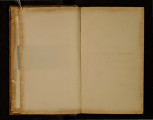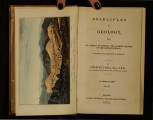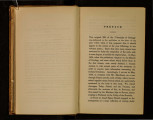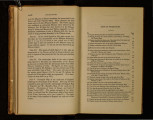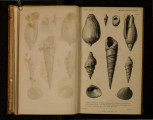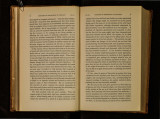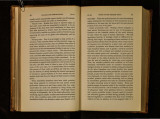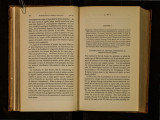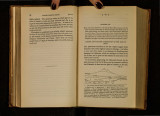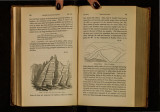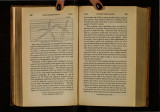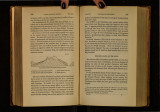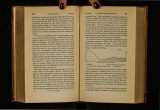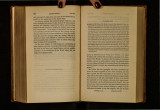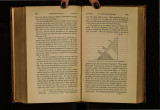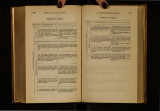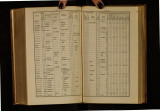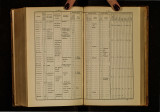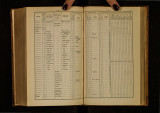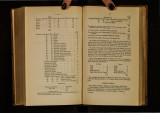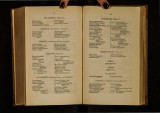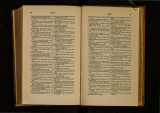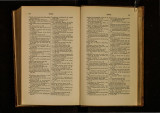| OCR Text |
Show 264 EOCENE PERIOD. [Ch. XIX. Phlc()'rrean fields and the flanks of Etna. They have given 0 rise chiefly to currents of basaltic lava, whereas those of Mont Dor and the Cantal are in great part trachytic. There are perhaps about three hundred of these minor cones in Central France; but a part of them only occur in Auvcrgne, .where some few are found at the bottom of valleys excavated through the more ancient lavas of Mont Dor, as the Puy de Tartaret, for example, whence issues a current of lava which, flowing into the bed of the river Couze, gave rise to the lake of Chambon. Here the more ancient columnar basalts of Auvergne are seen forming the upper portion of the precipices which bound the valley. But the greater part of the minor cones of Auvcrgne are placed upon the granitic platform, where they form an irregular ridge about eighteen miles in length and two in breadth. They are usually truncated at the summit, where the crater is often preserved entire, the lava having issued from the base of the hill. But frequently the crater is broken down on one side, where the lava has flowed out. The hills are composed of loose scorire, blocks of lava, lapilli, and puzzuolana, with fragments of trachyte and granite. The lavas may be often traced from the crater to the nearest valley, where they usurp the channel of the river, which has often excavated a deep ravine through the basalt. We have thus an opportunity of contrasting the enormous degradation which the solid and massive rock has suffered by aqueous erosion and the integrity of the cone of sand and ashes which has, in the mean time, remained uninjured on the neighbouring platform, where it was placed beyond the reach of the powet· of running water. Puy de Come.-We may mention the Puy de Come and its lava current, near Clcrmout, as one of the numerous illustrations of the phenomenon bere alluded to. 'l'his conical hill rises from tbe granitic platform at an angle of about 40 degrees to the height of more than 900 feet. Its summit presents two distinct craters, one of them with a vertical depth of Ch. XIX.] RAVINES EXCAVATED THROUGH LAVA. 265 250 feet. A stream of lava takes its rise at the western base of the hill, instead of issuing from either crater, and descends the granitic slope towards the present site of the town of Pont Gibaud. Thence it pours in a broad sheet down a steep declivity into the valley of the Sioule, filling the ancient riverchannel fm· the distance of more than a mile. The Sioulc, thus dispossessed of its bed, has worked out a fresh one between the lava and the granite of its westem bank; and the excava~ tion has disclosed, in one spot, a wall of columnar basalt about fifty feet high *. The excavation of the ravine is still in progress, every winter some columns of basalt being undermined and carried down the channel of the river, and in the course of a few miles rolled to sand and pebbles. Meanwhile the cone of Come remains stationary, its loose materials being protected by a dense vegetation, and the hill standing on a ridge not commanded by any higher ground whence floods of rain-water may descend. Puy Rouge.-At another point, farther down the course of the Siou]e, we find a second illustration of the same phenomenon in the Puy Rouge, a conical hill to the north of the village of Pranal. 'l'he cone is composed entirely of red and black scorire, tuff, and volcanic bombs. On its western side there is a worn~down crater whence a powerful stream of lava has issued and :flowed into the valley of the Sioule. The river has since excavated a ravine through the lava and subjacent gneiss, to the depth of 400 feet. On the upper part of the precipice forming the left side of this ravine, we see a great mass of black and red scoriaceous lava; below this a thin bed of gravel, evidently an ancient river-bed, now at an elevation of 50 feet above the channel of the Sioule. The gravel again rests upon gneiss, which has be.en eroded to the depth of 50 feet T· It is quite evident in tlus case that, while the basalt was gradually undermined and * Scrape's Central France, p. 60, aml plate. t Sec Lyell anti Murchison on the Excavation of Vulleys, Euin. New Phil Jomn., July 182!}, |




